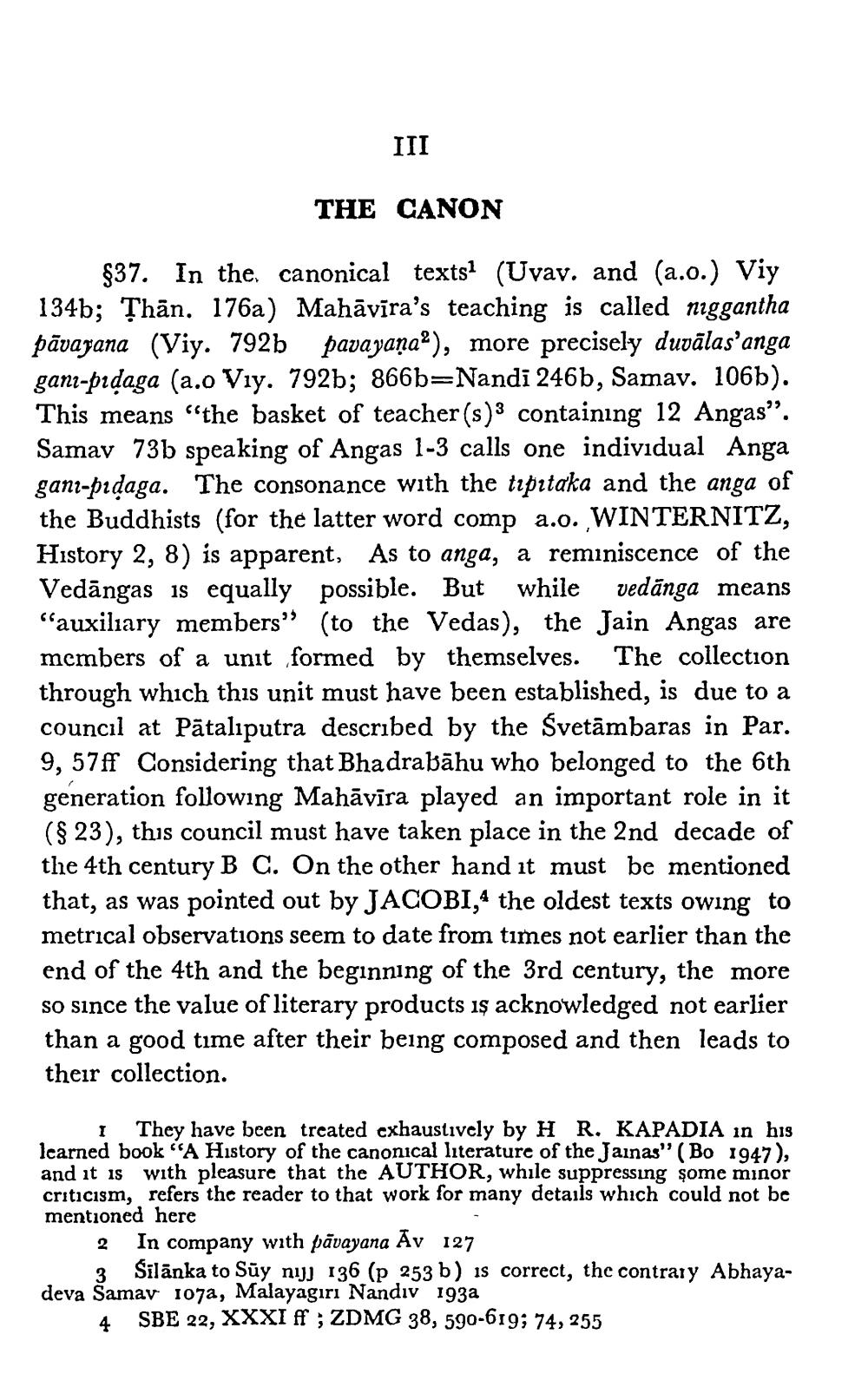________________
III
THE CANON
$37. In the canonical texts? (Uvav. and (a.o.) Viy 134b; Thān. 176a) Mahāvīra's teaching is called niggantha pāvayana (Viy. 792b pavayaņa), more precisely duvālas'anga gani-pedaga (a.o Vıy. 792b; 866b=Nandi 246b, Samav. 106b). This means "the basket of teacher(s) containing 12 Angas”. Samay 73b speaking of Angas 1-3 calls one individual Anga gani-pedaga. The consonance with the tipitaka and the anga of the Buddhists (for the latter word comp a.o. WINTERNITZ, History 2, 8) is apparent, As to anga, a reminiscence of the Vedāngas is equally possible. But while vedänga means "auxiliary members" (to the Vedas), the Jain Angas are members of a unit formed by themselves. The collection through which this unit must have been established, is due to a council at Pātaliputra described by the Svetāmbaras in Par. 9,57ff Considering that Bhadrabāhu who belonged to the 6th generation following Mahāvīra played an important role in it ($ 23), this council must have taken place in the 2nd decade of the 4th century BC. On the other hand it must be mentioned that, as was pointed out by JACOBI,4 the oldest texts owing to metrical observations seem to date from times not earlier than the end of the 4th and the beginning of the 3rd century, the more so since the value of literary products is acknowledged not earlier than a good time after their being composed and then leads to their collection.
1 They have been treated exhaustively by H R. KAPADIA in his learned book "A History of the canonical literature of the Jainas" (Bo 1947), and it is with pleasure that the AUTHOR, while suppressing some minor criticism, refers the reader to that work for many details which could not be mentioned here
2 In company with pavayana Āv 127
3 Silänka to Sūy nijj 136 (p 253 b) is correct, the contrary Abhayadeva Samay 107a, Malayagırı Nandıv 193a
4 SBE 22, XXXI f ; ZDMG 38, 590-619; 74, 255




